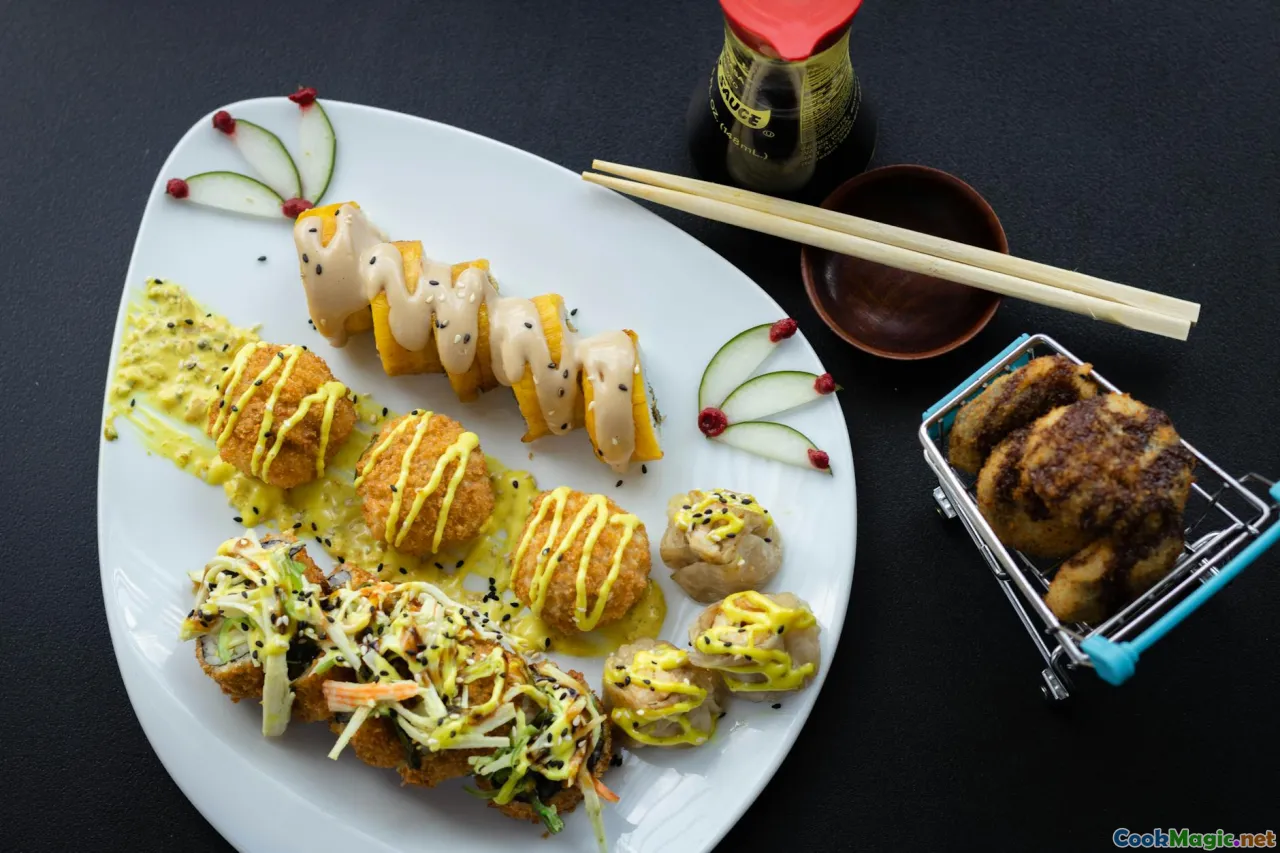Creating Thai Inspired Tempura for Contemporary Appetizers
7 min read Discover how to craft vibrant Thai-inspired tempura, blending traditional techniques with bold flavors for modern, irresistible appetizers. April 25, 2025 13:55
Creating Thai Inspired Tempura for Contemporary Appetizers
Imagine biting into a delicately crisp, golden shell that gives way to a burst of bold, aromatic flavors—a perfect harmony of tradition and innovation. That’s the magic of creating Thai-inspired tempura, a delightful culinary fusion that elevates the classic Japanese technique with the vibrant, complex flavors of Thailand. Whether you’re hosting a modern Asian tapas night or looking to surprise guests with something truly unique, this approach transforms tempura from a simple snack into a symphony of taste, aroma, and texture.
The Cultural Canvas: From Japan to Thailand
Tempura’s origins trace back to 16th-century Portugal, brought to Japan by Portuguese missionaries, where it evolved into a beloved cooking technique characterized by its light, airy batter and crisp exterior. Traditionally, tempura features seafood and vegetables lightly battered and fried to perfection, emphasizing subtlety and finesse.
Meanwhile, Thai cuisine is renowned for its bold flavors—spicy, sweet, sour, and savory—often balanced in a single dish through complex ingredient combinations like lemongrass, kaffir lime, galangal, and fish sauce. The artful layering of flavors in Thai food creates an emotional response, inviting diners into a sensory journey.
Marrying these two culinary worlds may seem unconventional, but it’s a natural progression in the age of global fusion cuisine. The goal: preserve tempura’s delicate technique while infusing it with the vibrant spirit of Thai ingredients.
The Heart of the Matter: Crafting the Perfect Thai Tempura Batter
Ingredients that Speak Thai
- Rice flour & tapioca starch: For a light, crisp batter that mimics traditional tempura.
- Coconut milk: Adds subtle sweetness and a hint of coconut aroma.
- Thai herbs and spices: Such as crushed kaffir lime leaves, Thai basil, and a touch of chili powder.
- Lemongrass and galangal: Finely minced to impart aromatic depth.
- Fish sauce or soy sauce: For umami richness.
The Technique
- Mix Dry Ingredients: Combine rice flour, tapioca starch, a pinch of chili powder, and dried herbs.
- Incorporate Liquids: Gradually add coconut milk mixed with a splash of fish sauce, whisking lightly to create a batter that’s smooth but not overmixed—lumps are okay.
- Rest the Batter: Let it sit for 10-15 minutes to allow the ingredients to meld.
- Temperature is Key: Ensure your oil is heated to 350°F (175°C). Too hot, and the batter burns before cooking; too cool, and it absorbs excess oil.
Tips for Success
- Keep the batter cold; stick it in the fridge if needed.
- Do not overmix; a few lumps contribute to a tender, crispy crust.
- Use a neutral oil like vegetable or peanut oil for frying.
Choosing the Perfect Thai-Inspired Tempura Ingredients
Vegetables
- Sweet potatoes: Their natural sweetness complements coconut flavors.
- Thai eggplant: Small, tender, and packed with flavor.
- Bell peppers: Red or yellow for vibrant color.
- Zucchini and carrots: Adds crunch and sweetness.
- Kaffir lime leaves: Thinly sliced for aroma and visual appeal.
Proteins
- Shrimp: Classic tempura ingredient, enhanced with a Thai marinade.
- Squid rings: Lightly seasoned with garlic and lime.
- Tofu: For a vegetarian option, marinated in Thai herbs.
Garnishes and Accompaniments
- Sweet chili sauce: For dipping.
- Peanut sauce: Adds a nutty dimension.
- Fresh herbs: Thai basil, cilantro, and mint.
- Lime wedges: For a fresh squeeze before eating.
Cooking and Presentation
The Frying Process
- Dip your prepared ingredients into the batter, allowing excess to drip off.
- Carefully place into the hot oil, frying in small batches to maintain temperature.
- Fry until golden and crispy, about 2-3 minutes.
- Drain on paper towels to remove excess oil.
Visual and Textural Appeal
The finished tempura should boast a light, airy batter with a crispy exterior—almost like delicate lace—encasing vibrant, flavorful fillings. Presentation matters; serve on a banana leaf or a simple white plate, garnished with fresh herbs and colorful vegetables for an Instagram-worthy display.
Personal Insights and Culinary Reflections
Creating Thai-inspired tempura has been a journey of sensory discovery. I recall the first time I experimented with coconut milk in the batter—transforming a traditional Japanese technique into something that felt authentically Thai. The aroma of frying batter infused with lemongrass and kaffir lime became intoxicating, evoking memories of bustling street markets in Bangkok.
This fusion isn’t just about combining ingredients; it’s about respecting each culture’s culinary integrity while daring to innovate. The delicate balance between tempura’s lightness and Thai’s bold flavors creates an appetizer that’s both comforting and exciting.
Final Thoughts
In the evolving landscape of global cuisine, Thai-inspired tempura exemplifies how tradition can be reimagined with creativity and respect. It invites home cooks and professional chefs alike to explore new flavor territories, offering a culinary experience that’s as visually stunning as it is delicious.
So next time you crave a snack or appetizer that surprises and delights, consider crafting your own Thai tempura—a crispy, aromatic testament to culinary fusion at its finest. Happy frying!









